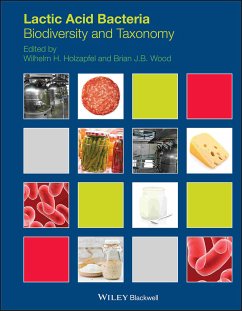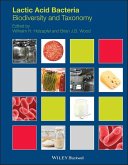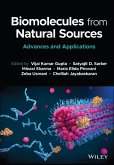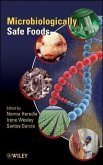Lactic Acid Bacteria Biodiversity and Taxonomy Lactic Acid Bacteria Biodiversity and Taxonomy Edited by Wilhelm H. Holzapfel and Brian J.B. Wood The lactic acid bacteria (LAB) are a group of related microorganisms that are enormously important in the food and beverage industries. Generally regarded as safe for human consumption (and, in the case of probiotics, positively beneficial to human health), the LAB have been used for centuries, and continue to be used worldwide on an industrial scale, in food fermentation processes, including yoghurt, cheeses, fermented meats and vegetables, where they ferment carbohydrates in the foods, producing lactic acid and creating an environment unsuitable for the survival of food spoilage organisms and pathogens. The shelf life of the product is thereby extended, but of course these foods are also enjoyed around the world for their organoleptic qualities. They are also important to the brewing and winemaking industries, where they are often undesirable intruders but can in specific cases have desirable benefits. The LAB are also used in producing silage and other agricultural animal feeds. Clinically, they can improve the digestive health of young animals, and also have human medical applications. This book provides a much-needed and comprehensive account of the current knowledge of the LAB, covering the taxonomy and relevant biochemistry, physiology and molecular biology of these scientifically and commercially important microorganisms. It is directed to bringing together the current understanding concerning the organisms' remarkable diversity within a seemingly rather constrained compass. The genera now identified as proper members of the LAB are treated in dedicated chapters, and the species properly recognized as members of each genus are listed with detailed descriptions of their principal characteristics. Each genus and species is described using a standardized format, and the relative importance of each species in food, agricultural and medical applications is assessed. In addition, certain other bacterial groups (such as Bifidobacterium) often associated with the LAB are given in-depth coverage. The book will also contribute to a better understanding and appreciation of the role of LA B in the various ecosystems and ecological niches that they occupy. In summary, this volume gathers together information designed to enable the organisms' fullest industrial, nutritional and medical applications. Lactic Acid Bacteria: Biodiversity and Taxonomy is an essential reference for research scientists, biochemists and microbiologists working in the food and fermentation industries and in research institutions. Advanced students of food science and technology will also find it an indispensable guide to the subject. Also available from Wiley Blackwell The Chemistry of Food Jan Velisek ISBN 978-1-118-38384-1 Progress in Food Preservation Edited by Rajeev Bhat, Abd Karim Alias and Gopinadham Paliyath ISBN 978-0-470-65585-6
Dieser Download kann aus rechtlichen Gründen nur mit Rechnungsadresse in A, B, BG, CY, CZ, D, DK, EW, E, FIN, F, GR, HR, H, IRL, I, LT, L, LR, M, NL, PL, P, R, S, SLO, SK ausgeliefert werden.









